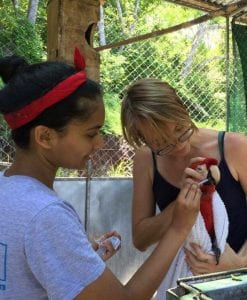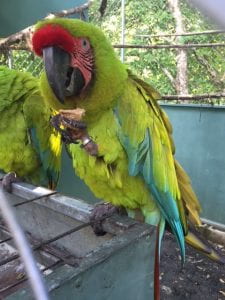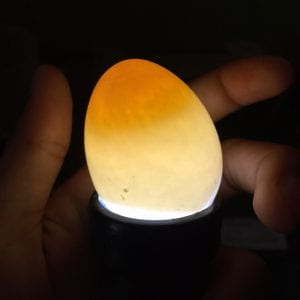Expanding Horizons Journal: Molly Chirunomula

Hola from Costa Rica! My name is Molly Chirunomula and I am a Cornell veterinary student in the class of 2019. This summer I am working at The Ara Project, a macaw conservation nonprofit on the Pacific coast of Costa Rica. The Ara Project is a captive breeding and release program that aims to restore Scarlet Macaws (Ara macao) and Great green or Buffon’s Macaws (Ara ambiguus) to their historic ranges across the country. Native populations of both of these species have suffered a drastic decline in the last 65 years, as a direct result of human activities including logging, land clearing for agriculture, and poaching for feathers, meat, and sale into the pet trade. Great greens face a particularly tenuous future, with as few as 2500 mature individuals remaining in the wild (iucnredlist.org) and only 300 estimated in Costa Rica. These birds rely on the endangered Mountain Almond tree (Dipteryx panamensis) as both a food source and a nesting site. Human destruction of the Mountain Almond tree has contributed hugely to the decline of Great green Macaws.

The Ara Project’s captive breeding macaws were mainly donated or confiscated. They are all non-releasable, either because they were acquired in poor condition and could not be adequately rehabilitated, or because they are too strongly imprinted on humans. Their health and welfare in captivity is a top priority, as is their ability to successfully reproduce.
My primary objective in planning my summer work here was to evaluate and improve the macaws’ diet plan, with the goal of eventually increasing their reproductive success. I am currently in the process of evaluating the nutritional intake of our macaws via a diet intake study. I have collected data on the foods being provided to and discarded or left behind by a sample of Great green Macaw breeding pairs. This information gives us a detailed understanding of their nutritional intake, and has incidentally allowed us to assess the variability in their food preferences.
I have also had an important role in veterinary care of the flock during my time at The Ara Project, as we do not currently have a veterinarian on site. To name a few cases, we have successfully diagnosed and treated a crop impaction, an eye infection, and a fight-related beak wound. I have also been involved in egg candling to assess fertility, fecal screening for endoparasites, antiparasite treatments, and I have had plenty of practice catching, restraining, weighing and body condition scoring the birds!

Despite the very real risk of Costa Rica’s native macaws disappearing from local ecosystems, deforestation and poaching continue to hinder conservation efforts and threaten the remaining populations of these birds. Working on this conservation project firsthand has allowed me to appreciate the complex social and political context in which we operate. While locals here in Islita have an incredibly positive attitude towards “las lapas,” the macaws, poaching still persists in other parts of the country. Further, the many stakeholders who do share a common goal of sustaining national wildlife often disagree about how best to respect and preserve it. Ultimately we must all remember that our lifestyles and activities are inextricably linked to environmental health. Here in Costa Rica, human impact on biodiversity directly affects the ecotourism upon which many have built their livelihoods. It is in everyone’s best interests to foster a sustainable relationship with the environment and the species co-inhabiting it.
My passion for the macaws has only grown since I began working here. These birds are brilliant not only in color, but also in intelligence and personality. They are remarkably adaptable, capable of deep compassion, and they never outgrow their curiosity. I look forward to a future in which these unique and beautiful parrots repopulate the forests where they belong!
